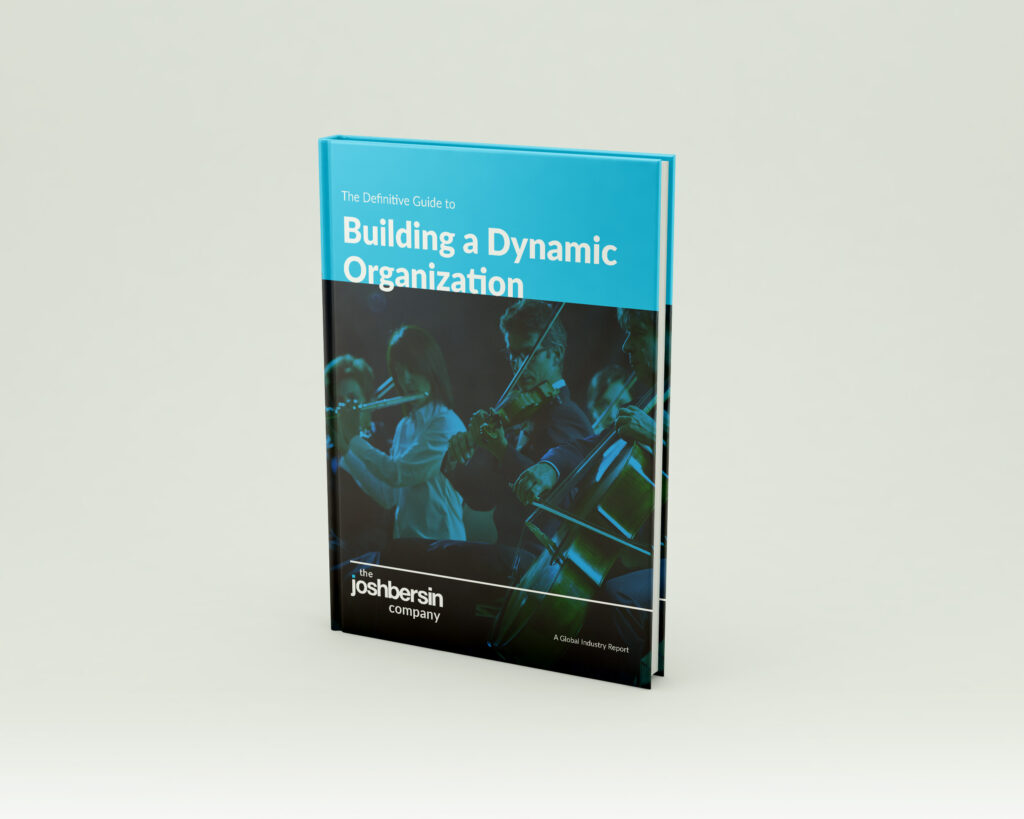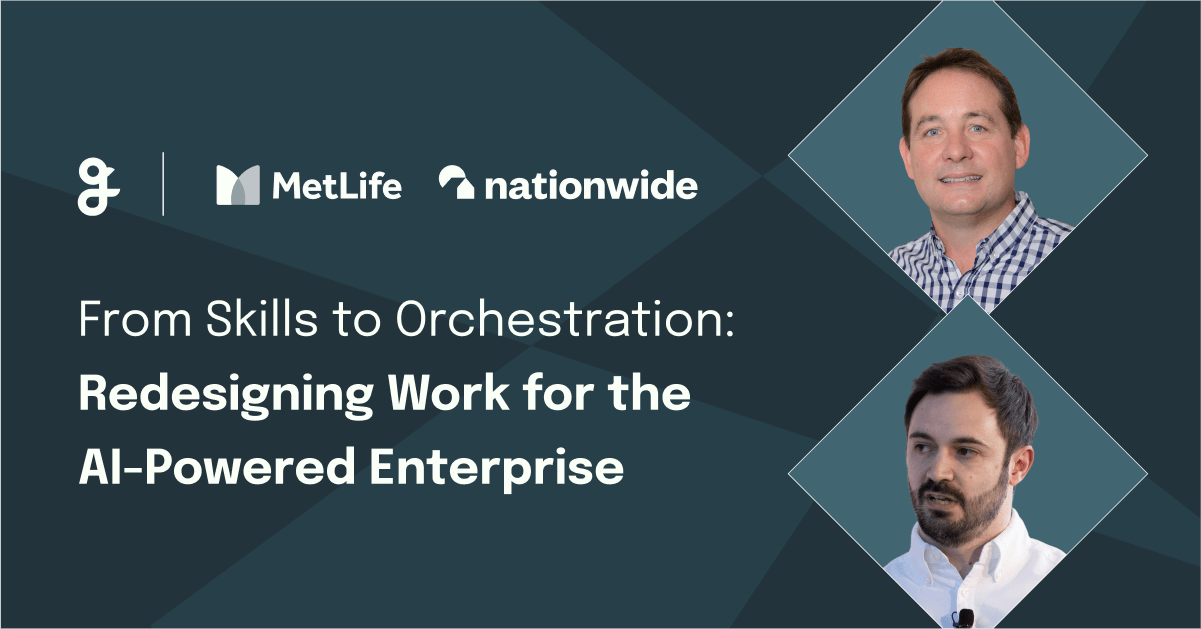Beyond boundaries: what is a “dynamic” work culture and why does it matter?
Discover what a dynamic work culture is and learn why this type of working environment is beneficial for employees and employers

With the new year comes a new North Star for HR and business strategy: Dynamic Organizations. We coined this term with The Josh Bersin Company following our year-long research project to investigate what sets top-performing organizations apart.
When we started our analysis of nearly 800 organizations, we expected to see a pronounced difference in the way these companies are run. However, our findings revealed something even more significant: that elite organizations operate entirely differently from their competitors—and enjoy substantially better outcomes as a result.
Now that our research is out, we’re recapping the best practices leaders can embrace to help their organizations become more dynamic—and breaking down why dynamic workplaces are at such a significant advantage in the Post-Industrial era of work.
What is a Dynamic Organization?
A dynamic workplace is an adaptable and fast-changing work environment that responds quickly to technological, economic, and cultural shifts. It emphasizes flexibility, continuous learning, and collaboration to support innovation and employee engagement in real time.
Dynamic Organizations describe any company that embraces agile operating models, a culture of collaboration and change, and an ongoing commitment to transformation that’s rooted in market insights and data. These businesses not only execute HR practices like career management, internal mobility, and learning and development better—they also move faster, satisfy their customers more, and generally outpace the competition.
Following our analysis of 772 companies, we’ve found that only 7% of these organizations have the strategies and infrastructure needed to outpace the competition. As the pace of technological advancement accelerates and market instability continues, businesses that adopt dynamic ways of working will be in the best position to overcome the ongoing disruptions that hallmark the Post-Industrial era.
7 benefits of creating a dynamic workplace
From better people outcomes to a greater likelihood of surpassing financial targets, there are many advantages associated with embracing dynamic ways of work. Some key benefits include:
#1. Increased productivity
While static companies break down work into jobs, Dynamic Organizations take a skills-centric approach in which talent is continuously reallocated to open opportunities depending on skill needs and capacity. By removing the silos and boundaries that typically limit peoples’ scope of work, employees at Dynamic Organizations are empowered to put their skills and abilities to full use across the enterprise. Overall, Dynamic Organizations are 20X more likely to accomplish high levels of productivity when compared to their static counterparts.
#2. Better employee engagement
At Dynamic Organizations, job titles and level of seniority don’t dictate whose ideas are valued. Instead, these companies are what The Josh Bersin Company refers to as skills meritocracies, which their SVP of Research Kathi Enderes describes as organizations where “…the best ideas win, regardless of where they come from. That means you have a psychologically safe culture because people can speak up, whether or not they are at the top of the pyramid.”
This flatter and more egalitarian talent management approach empowers everyone to share their thoughts and contribute to projects across their organization, in turn boosting workplace satisfaction. Overall, Dynamic Organizations are 31X more likely to engage their employees.
#3. Greater ability to adapt to change
Since disruption is a constant in our Post-Industrial era, a business’s ability to strategically respond to change will make or break its chances for success. Dynamic Organizations are in the best position to proactively address new challenges and sudden shifts because these companies’ strategies are based on market insights and data.
These organizations are also skills-based, meaning leaders can reallocate talent and create new cross-functional teams on the fly to overcome any emerging obstacles their company might face. Overall, Dynamic Organizations that use skill insights to drive strategic action are 5X more likely to adapt to change well.
#4. Improved employee retention
Employees are eager to stay at companies where they know they won’t be pigeonholed into a specific role or responsibility. Dynamic Organizations encourage their people to move around and participate in projects within many different teams and departments, in turn helping everyone build new skills and strengthen their connections.
#5. More innovation
Dynamic Organizations are 7X more likely to innovate effectively. Since these companies are skills meritocracies, employees don’t have to keep their suggestions or ideas for improvement to themselves. Instead, everyone is empowered to share their thoughts which gives leaders plenty of inspiration for new directions to take their organization in. Dynamic Organizations also study market insights, so they can quickly respond to any emerging trends they’re seeing
#6. More favorable customer experiences
Rather than sticking with one tried-and-true way of doing things, Dynamic Organizations aren’t afraid to say something new or rework operating models to get something done in a way that will better serve their customers. As a result, Dynamic Organizations are 3X more likely to delight their customers when compared to companies that rely on more static operating models.
#7. Enhanced ability to attract top talent
Since Dynamic Organizations are 5X more likely to be recognized as great places to work, it’s easy to understand why these companies have no problem attracting talent with in-demand skills. These companies tend to prioritize employee autonomy and flexible working, which has been proven to help promote employee wellbeing and satisfaction. 43% of professionals cite less stress and better mental health as the top benefit of work flexibility and one in three workers believe it increases their job satisfaction and morale.
5 key characteristics of a dynamic workplace
While every Dynamic Organization has a unique culture and strategy, there are a few commonalities that all dynamic workplaces share, such as:
#1. Employee autonomy and trust
Dynamic workplaces allow employees to work in any location whenever job requirements allow it, offer scheduled flexibility to the entire workforce, and empower employees to have significant control over the projects they work on. The notion of arbitrary requirements such as set hours or a pre-defined amount of mandatory in-office time doesn’t exist at workplaces that are committed to becoming more dynamic.
#2. Internal mobility
Rather than immediately looking to external hires when a vacancy arises, dynamic workplaces prioritize internal candidates, identify clear goals for internal hiring, and transparently communicate progress internally and externally. These companies will encourage employees to work on internal projects and gigs outside of their day-to-day responsibilities, provide opportunities for job sharing at all levels, and structure work to provide flexibility to work on internal projects.
#3. Cross-functional collaboration opportunities
All Dynamic Organizations excel at cross-functional collaboration. These workplaces are committed to actively changing work processes to empower employees from various teams and departments to come together to complete the same project.
Dynamic Organizations also provide team members with ample support mechanisms to charter, bring together, run, and disassemble teams at scale. To facilitate this agile creation of cross-functional teams, many organizations turn to talent marketplaces. The platforms enable hiring managers to post a project and get matched with employees whose skills and capacities align with what they’re looking for.
#4. Inclusive environment
Unlike rigid job-centric companies, Dynamic Organizations make sure every employee feels empowered and included, regardless of their level of seniority or background. These companies actively work to mitigate bias and favoritism across all talent processes and create programs to foster diversity and inclusion across all teams. Many dynamic workplaces use talent marketplaces to ensure all employees have visibility into career development opportunities within their organization so that everyone has an equal chance to participate in them.
#5. Skills-centric strategies
Most Dynamic Organizations use skill insights to drive strategic actions. They’re skills meritocracies, which means that the best ideas win—no matter where they come from—and people share knowledge and suggestions freely. To support this shift to skills-based strategies, many dynamic workplaces use skills intelligence tools like Gloat’s Skills Foundation to gain complete insight into their workforce’s capabilities as well as the knowledge gaps they need to bridge.
To learn more about the tools and strategy shifts businesses are embracing to become Dynamic Organizations, check out our executive summary of The Dynamic Organization research report.





